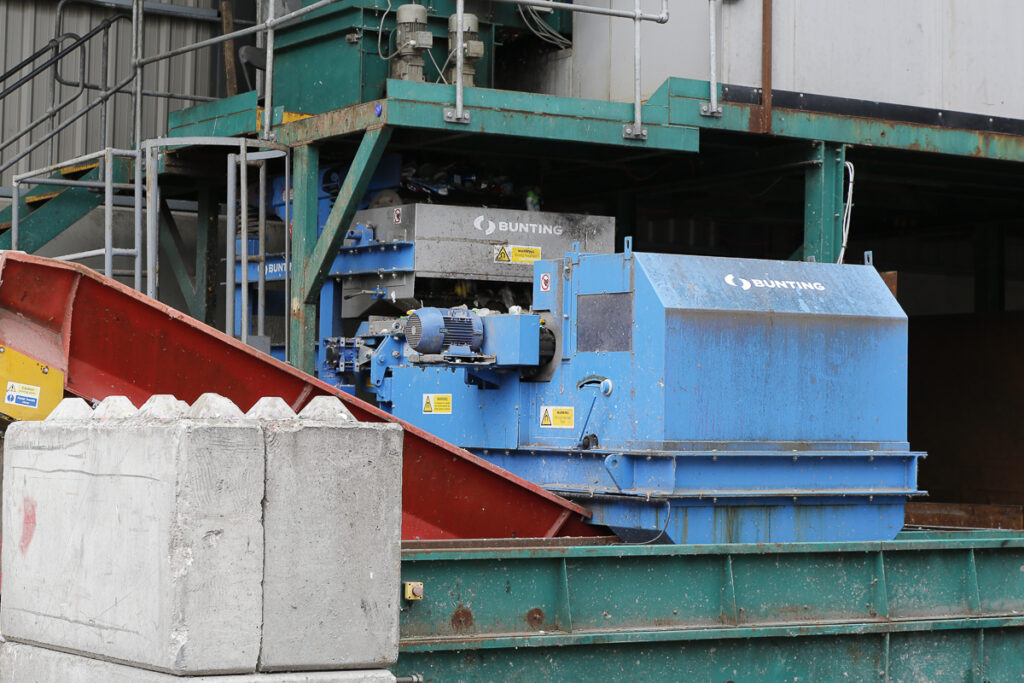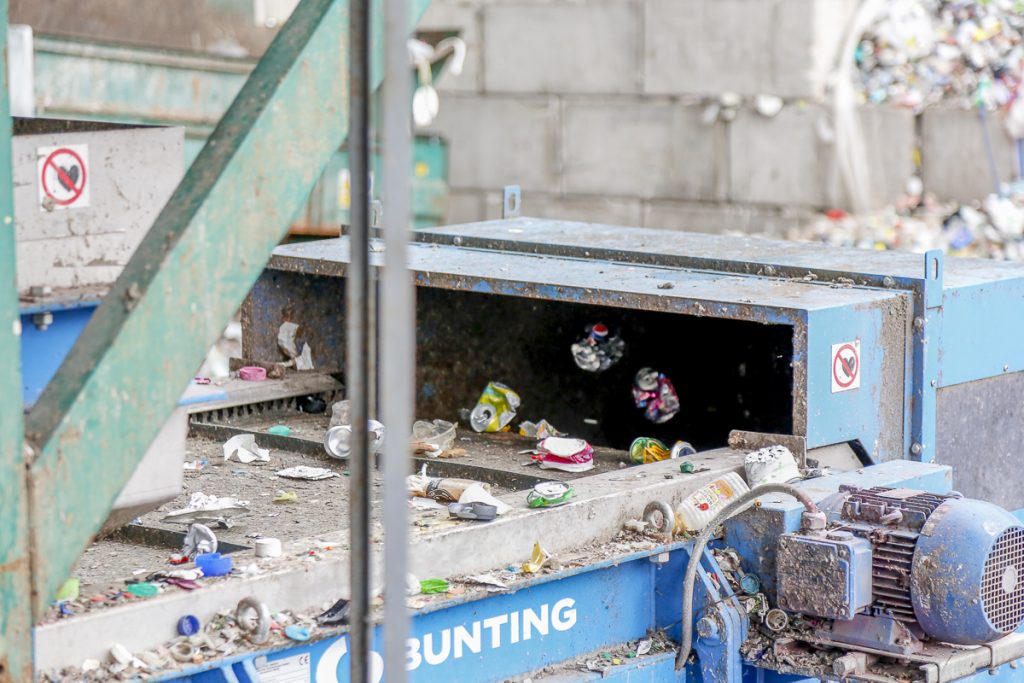Vital Metal Recovery from Household Waste
By Paul Fears | 10 October 2023
Article first published in Skip & Waste (October 2023)
Metal recovery and recycling from waste is not new, with evidence of such activity in Roman times. In modern recycling plants, metal recovery provides a vital financial lifeline. Bunting assists waste management companies in maximising metal recovery whilst maintaining high purity levels.

Ferrous Metal Recovery
The recovery of ferrous metals, such as steel food and beverage cans, commonly occurs early in the recycling process. Overband Magnets, placed across or in line with the conveyor transporting the waste, magnetically attract the ferrous metal before automatically transporting it into a collection area. Low throughput plants use Permanent Overband Magnets with large volume operations, such as energy-from-waste EfW plants, installing larger electromagnets. In a pre-sorted waste plant, the steel can proportion can be as high as 25% of the feed.
- Technical information – Overband Magnets
Non-Ferrous Metal Recovery
The remaining mix of non-magnetic material contains non-ferrous metals, predominantly aluminium beverage cans. High in value and demand, aluminium cans provide an excellent financial return when supplied with the optimum purity specification. The Eddy Current Separator uses strong magnetic forces to propel aluminium cans off a conveyor, transporting the mixed waste into a separate collection area or onto another conveyor.

An Eddy Current Separator is a dual pulley conveyor system where the non-metallic rotor cover houses an independently rotating high-speed magnetic rotor. Separation occurs when a non-ferrous metal particle (e.g. aluminium) is conveyed into the magnetic zone. The non-ferrous metal particle is exposed to rapidly changing magnetic polarity. This induces ‘eddy currents’ into the particle, generating an electrical current (Fleming’s left-hand rule) that subsequently creates its own magnetic field. The two magnetic fields oppose each other (i.e. North vs North pole repulsion), causing the repulsion of the non-ferrous metal particle and change in trajectory. The measured positioning of a splitter enables the separation of non-ferrous metals from non-metallic material due to the altered and unaltered material trajectories.
- Technical information – Eddy Current Separators
In pre-sorted refuse plants, approximately 15% of the original plant input is non-ferrous metals such as aluminium drinks cans and aluminium trays.
At the Parry & Evans pre-sorted domestic refuse site in Deeside, UK, the combination of the Bunting Overband Magnet, Drum Magnet, and Eddy Current Separator recover approximately 800 kg/hr of metal. A vital financial benefit to ensure the recycling operation remains viable.
Related Recycling Articles
- HML Recycling Operate Bunting Magnetic Separators
- Parry & Evans Recover Metal with Bunting Magnetic Separators
For further information on Magnetic Separators, Eddy Current Separators, and ElectroStatic Separators for metal separation in recycling applications or to discuss a specific project, including undertaking tests in our Customer Experience Centre, please get in touch with our technical sales team at:
Email: Michael Allen (mallen@buntingmagnetics.com)
Telephone: +44 (0) 1527 65858
Follow us on social media